Map: The Greek World during the Greco-Persian Wars (ca. 500–479 BC)
Annotations
Properties
Boeotian helmet, 4th century BC
Annotations
Bronze Boeotian helmet, 4th century BC, found in Tigris river in Iraq, believed to have belonged to one of Alexander the Great's cavalrymen. Displayed at the Ashmolean Museum, Oxford.
Properties
Reconstructed drawing of the west end of the Stoa Poikile
Annotations
Reconstructed drawing of the west end of the Stoa Poikile (the Painted Stoa) as it would have appeared in about 400 BCE.
Properties
Pnyx, from the Observatory
Annotations
As a rule, the Ekklesia met at its own special meeting place known as the Pnyx, a large theater-shaped area set into the long ridge west of the Acropolis. In theory every assembly represented the collective will of all the male citizens of Athens, although the actual capacity of the Pnyx never seems to have exceeded 13,500, and for much of the Classical period it held only about 6,000. (American School of Classical Studies at Athens)
Agora Image: 2004.01.0401 (HAT 64-170)
Properties
Pnyx: The Bema
Annotations
As a rule, the Ekklesia met at its own special meeting place known as the Pnyx, a large theater-shaped area set into the long ridge west of the Acropolis. In theory every assembly represented the collective will of all the male citizens of Athens, although the actual capacity of the Pnyx never seems to have exceeded 13,500, and for much of the Classical period it held only about 6,000. (American School of Classical Studies at Athens)
Properties
Oath stone (lithos) of the Athenians
Annotations
Excavation of Trench V in the Stoa Temenos: underpinning of the stone identified the Oath stone (lithos) of the Athenians, on the steps of the Royal Stoa. Sixth century BCE and later. North wall of Stoa in background.
Agora Image: 2008.19.0012 (86-390). 10 Aug 1970
Properties
The Odeon of Pericles View of the exterior
Annotations
The Odeon of Pericles, situated next to the Theatre of Dionysus, on the south slope of the Acropolis in Athens, Greece. Although no longer standing, recent excavations have revealed the exact site of the Odeon to be the south-eastern corner of the Acropolis, on the sacred Dionysian precinct. The Odeon is believed to have been the first roofed theatre-building devoted to performance, as well as the first permanent theatre built on the south slope.
The Odeon was constructed between 446-442 BC. Built mainly from timber, the Odeon is believed to have stood for over three centuries, before being destroyed by fire and later rebuilt using stone. The Odeon of Pericles was regarded as being one of the finest architectural wonders of ancient Athens.
The Odeon was used for theatrical performances and poetry readings, and probably accommodated political and philosophical lectures. The Odeon also hosted rehearsals for the Lenaean and Panathenaic festivals, as it provided the acting companies with a year-round housed theatre-space, as well as being used as a gathering place for choruses, a store for theatrical props, and a place to stow tributes to the gods, such as the armour of the dead. (Didaskalia)
Image copyright the University of Warwick. Created by the THEATRON Consortium.
Properties
The Odeon of Pericles View of the interior
Annotations
The Odeon of Pericles, situated next to the Theatre of Dionysus, on the south slope of the Acropolis in Athens, Greece. Although no longer standing, recent excavations have revealed the exact site of the Odeon to be the south-eastern corner of the Acropolis, on the sacred Dionysian precinct. The Odeon is believed to have been the first roofed theatre-building devoted to performance, as well as the first permanent theatre built on the south slope.
The Odeon was constructed between 446-442 BC. Built mainly from timber, the Odeon is believed to have stood for over three centuries, before being destroyed by fire and later rebuilt using stone. The Odeon of Pericles was regarded as being one of the finest architectural wonders of ancient Athens.
The Odeon was used for theatrical performances and poetry readings, and probably accommodated political and philosophical lectures. The Odeon also hosted rehearsals for the Lenaean and Panathenaic festivals, as it provided the acting companies with a year-round housed theatre-space, as well as being used as a gathering place for choruses, a store for theatrical props, and a place to stow tributes to the gods, such as the armour of the dead.
Image copyright the University of Warwick. Created by the THEATRON Consortium.
Properties
The Odeon of Pericles Architectural cut-away
Annotations
The Odeon of Pericles, situated next to the Theatre of Dionysus, on the south slope of the Acropolis in Athens, Greece. Although no longer standing, recent excavations have revealed the exact site of the Odeon to be the south-eastern corner of the Acropolis, on the sacred Dionysian precinct. The Odeon is believed to have been the first roofed theatre-building devoted to performance, as well as the first permanent theatre built on the south slope.
The Odeon was constructed between 446-442 BC. Built mainly from timber, the Odeon is believed to have stood for over three centuries, before being destroyed by fire and later rebuilt using stone. The Odeon of Pericles was regarded as being one of the finest architectural wonders of ancient Athens.
The Odeon was used for theatrical performances and poetry readings, and probably accommodated political and philosophical lectures. The Odeon also hosted rehearsals for the Lenaean and Panathenaic festivals, as it provided the acting companies with a year-round housed theatre-space, as well as being used as a gathering place for choruses, a store for theatrical props, and a place to stow tributes to the gods, such as the armour of the dead. (Didaskalia)
Image copyright the University of Warwick. Created by the THEATRON Consortium.


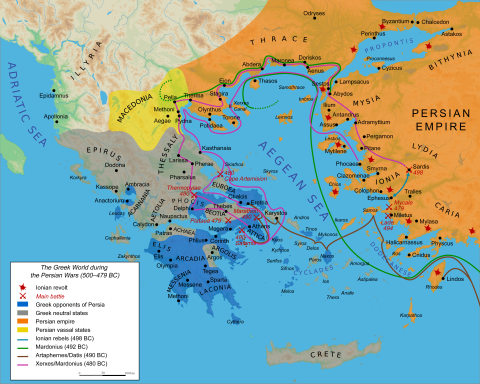
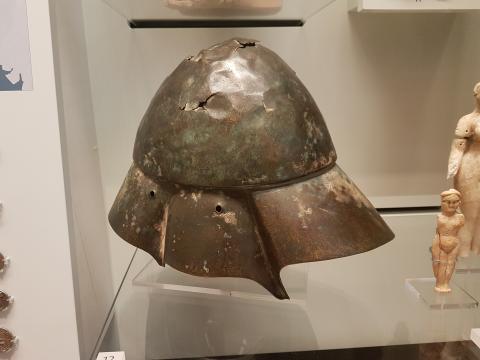
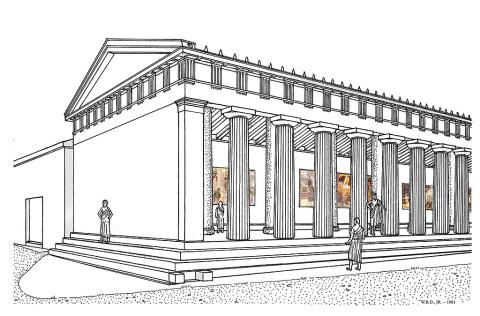
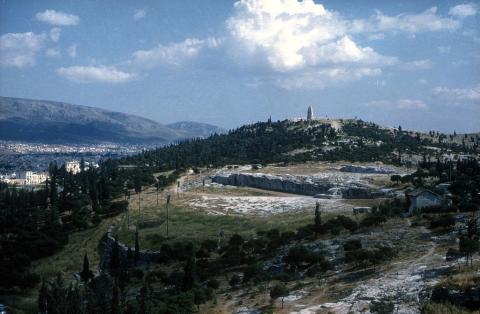
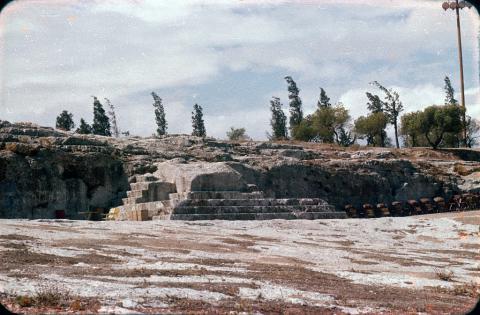
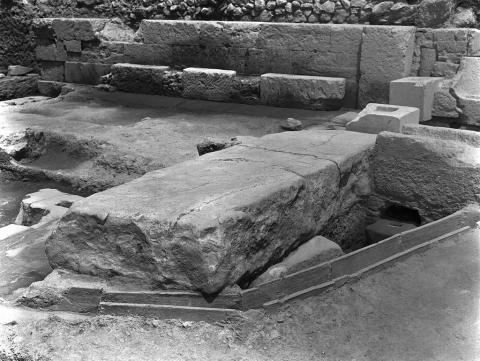

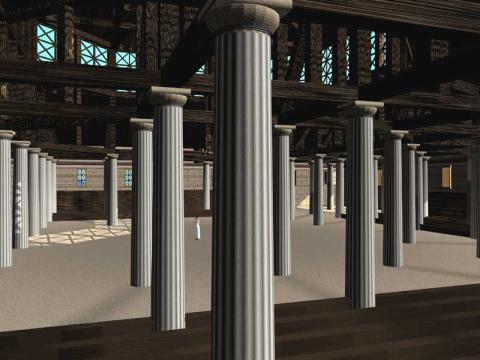
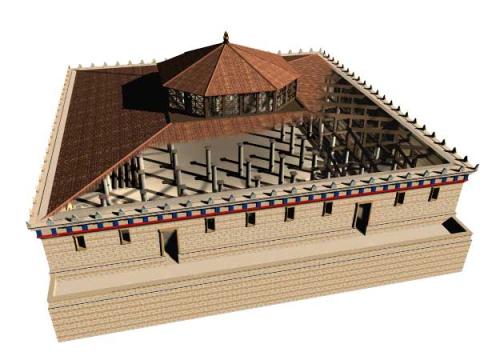
Agora Image: 2008.20.0086